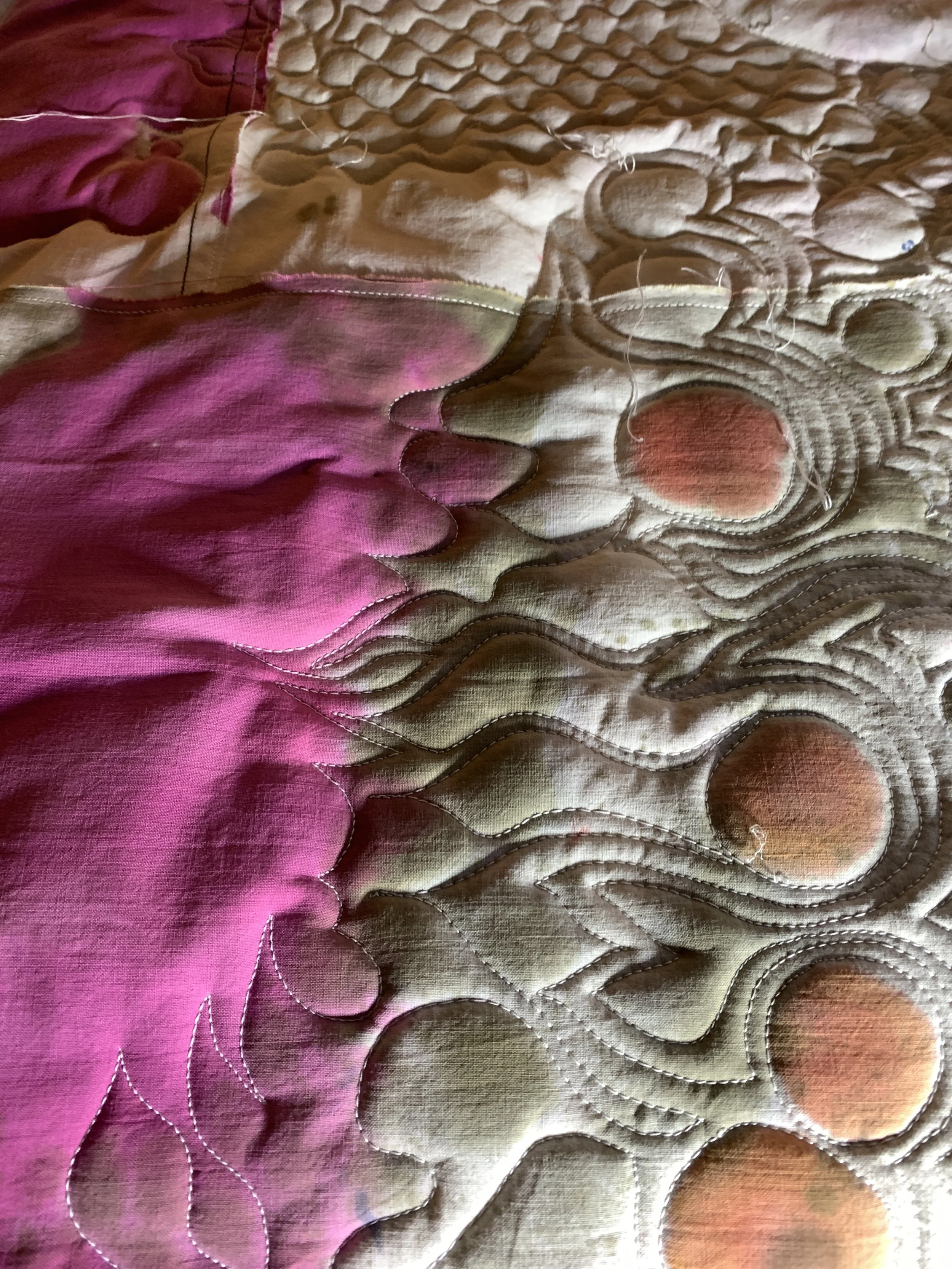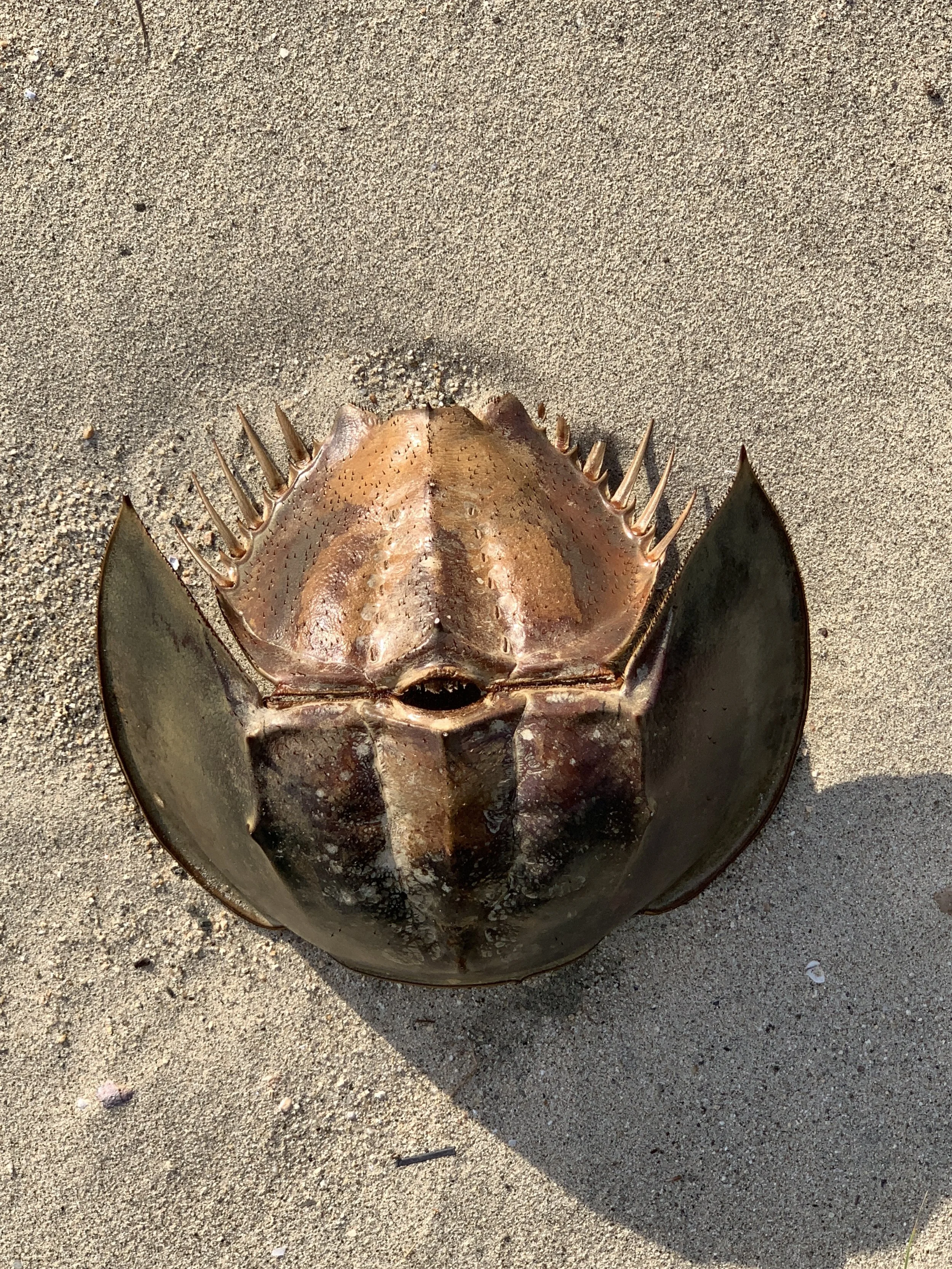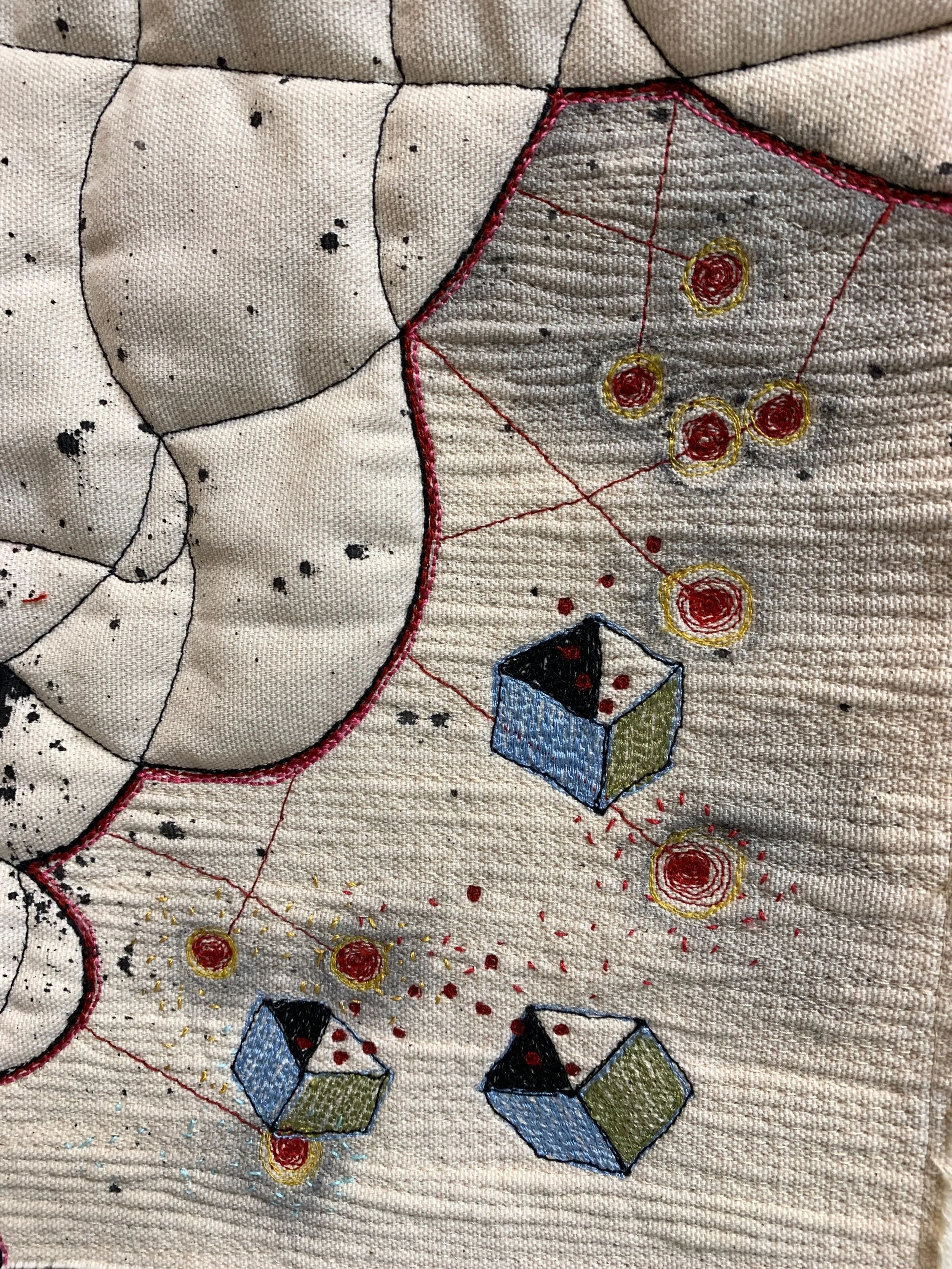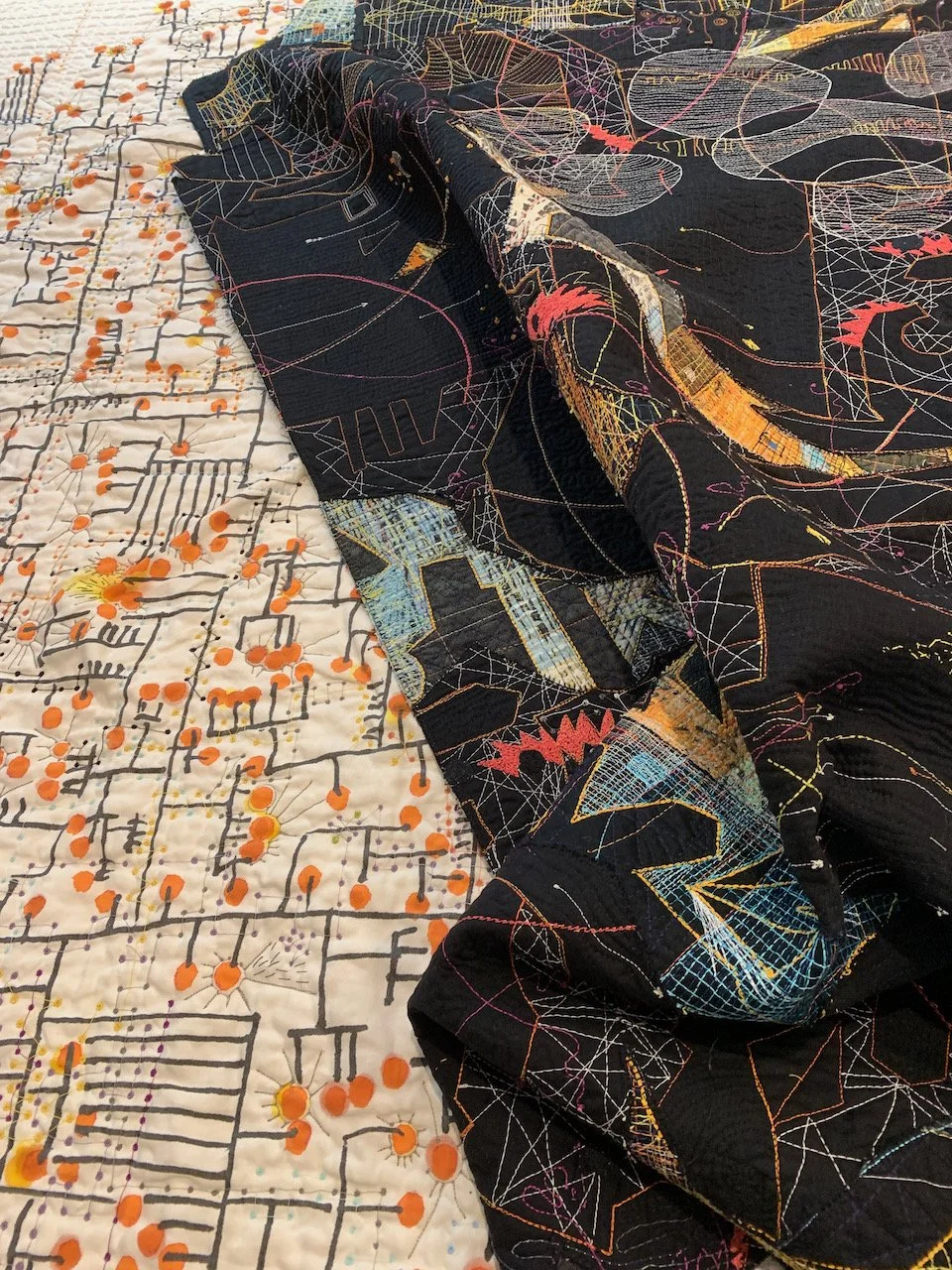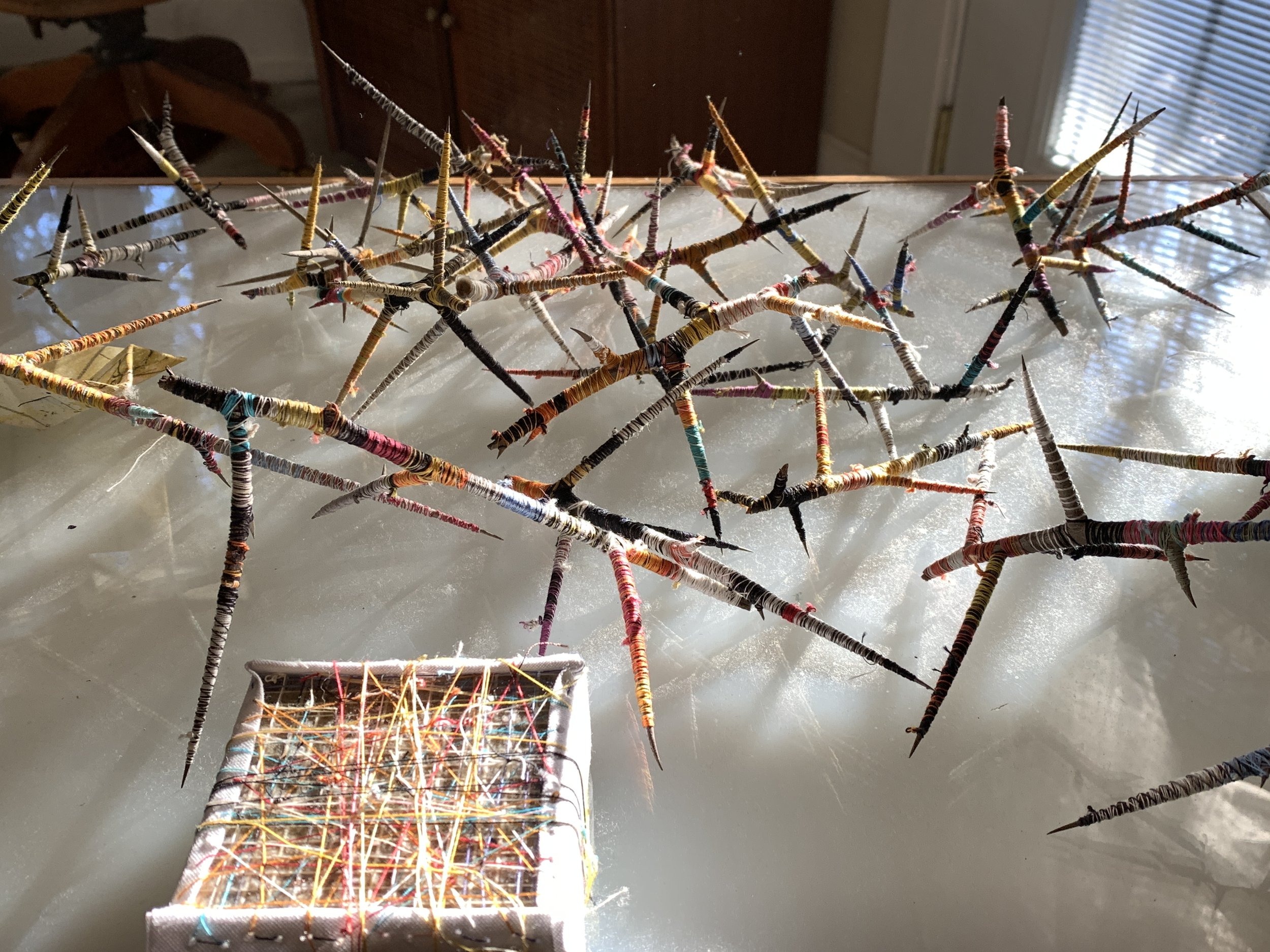I love dropcloths. I don’t often make them myself but if I happen upon one that is allowed to go home with me I am delighted. Dropcloths show effort, action and revision. Dropcloths protect what is under.
Dropcloths are a record of time.
So when I came upon this discarded dropcloth I couldn’t resist taking it home with me. Bright and deep magenta, brilliant yellow and a hint of sky blue. There are some stampings on it and a sprinkling of raw umber spots. It is soft and worn, damaged but intact. I worked with it for a couple of months before I came to my final decisions about its form. Here are some of the steps I took in the process.
The cloth went through many stages of composition and texture. I loved all the stitching and texture but did not find the end result compelling enough to consider it done. The work ended up in the raw materials section of the studio where it could rest and be considered for a different life. See a post about its first incarnation here).
Then one day I decided to cut it up to experiment with curved seams and 3D features. The cloth really came alive. It started looking like a creature or a giant squishy comfort toy.
I loaded those squishy bits onto the leftover dropcloth to create a larger piece. I added cone-shaped objects into the mix from another cut up quilt. Eventually the pieces came together to form a whole.
I’m still settling on which way I want to hang it. I like it both ways and it may still go through a transformation while I work on details. It makes me laugh. Something I need more and more these days.
Fruit, 25” x 50”, Paula Kovarik
Fruit, 25” x 50”, Paula Kovarik
The Herd show is at the International Quilt Museum until September. If you are traveling anywhere near Lincoln, Nebraska please stop in to see it.









